Essential topics to be covered in this session
- To send the digital data over an analog media, it needs to be converted into analog signal.There can be two cases according to data formatting.
Band-pass
- The filters are used to filter and pass frequencies of interest. A band-pass is a band of frequencies which can pass the filter.
Low-pass
- Low-pass is a filter that passes low frequencies signals.
- When digital data is converted into a band-pass analog signal, it is called digital-to-analog conversion.
- When low-pass analog signal is converted into band-pass analog signal, it is called analog-to-analog conversion.
Digital-to-Analog Conversion
- When data from one computer is sent to another via some analog carrier, it is first converted into analog signals. Analog signals are modified to reflect digital data.
- An analog signal is characterized by its amplitude, frequency, and phase. There are three kinds of digital-to-analog conversions:
Amplitude Shift Keying
- In this conversion technique, the amplitude of analog carrier signal is modified to reflect binary data.
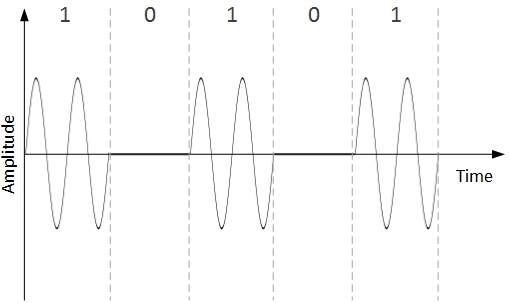
- When binary data represents digit 1, the amplitude is held; otherwise it is set to 0. Both frequency and phase remain same as in the original carrier signal.
Frequency Shift Keying
- In this conversion technique, the frequency of the analog carrier signal is modified to reflect binary data.
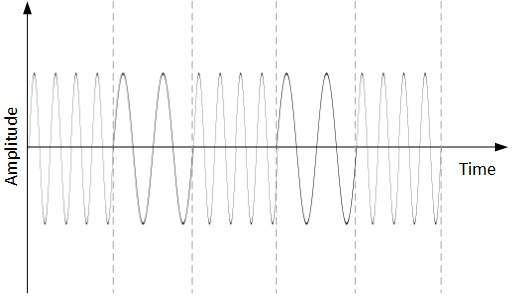
- This technique uses two frequencies, f1 and f2. One of them, for example f1, is chosen to represent binary digit 1 and the other one is used to represent binary digit 0.
- Both amplitude and phase of the carrier wave are kept intact.
Phase Shift Keying
- In this conversion scheme, the phase of the original carrier signal is altered to reflect the binary data.
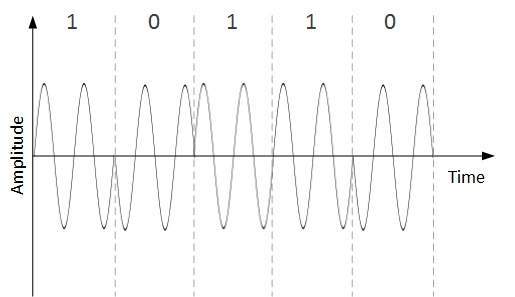
- When a new binary symbol is encountered, the phase of the signal is altered. Amplitude and frequency of the original carrier signal is kept intact.
Quadrature Phase Shift Keying
- QPSK alters the phase to reflect two binary digits at once.
- This is done in two different phases. The main stream of binary data is divided equally into two sub-streams.
- The serial data is converted in to parallel in both sub-streams and then each stream is converted to digital signal using NRZ technique.
- Later, both the digital signals are merged together.
Analog-to-Analog Conversion
- Analog signals are modified to represent analog data.
- This conversion is also known as Analog Modulation.
- Analog modulation is required when band-pass is used.
- Analog to analog conversion can be done in three ways:

Amplitude Modulation
- In this modulation, the amplitude of the carrier signal is modified to reflect the analog data.
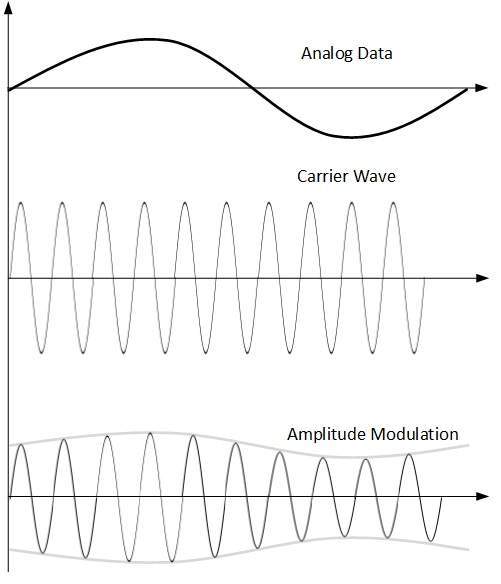
- Amplitude modulation is implemented by means of a multiplier.
- The amplitude of modulating signal (analog data) is multiplied by the amplitude of carrier frequency, which then reflects analog data.
- The frequency and phase of carrier signal remain unchanged.
Frequency Modulation
- In this modulation technique, the frequency of the carrier signal is modified to reflect the change in the voltage levels of the modulating signal (analog data).
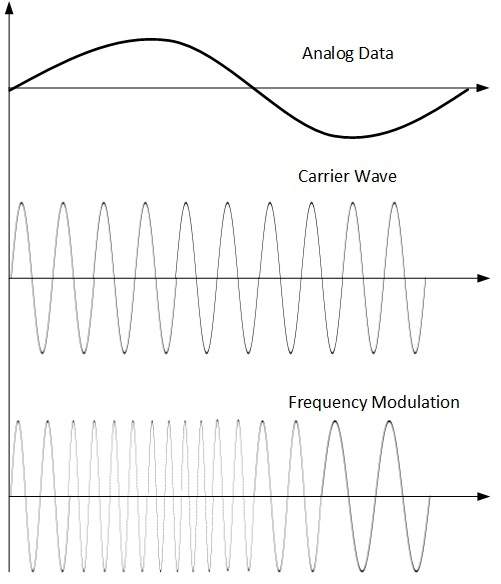
- The amplitude and phase of the carrier signal are not altered.
Phase Modulation
- In the modulation technique, the phase of carrier signal is modulated in order to reflect the change in voltage (amplitude) of analog data signal.
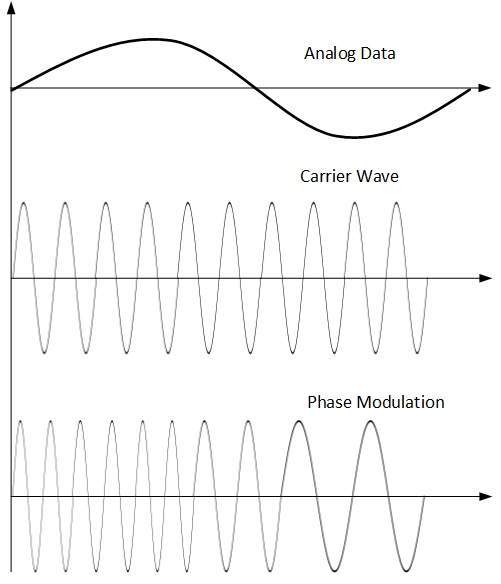
- Phase modulation is practically similar to Frequency Modulation, but in Phase modulation frequency of the carrier signal is not increased.
- Frequency of carrier is signal is changed (made dense and sparse) to reflect voltage change in the amplitude of modulating signal.








